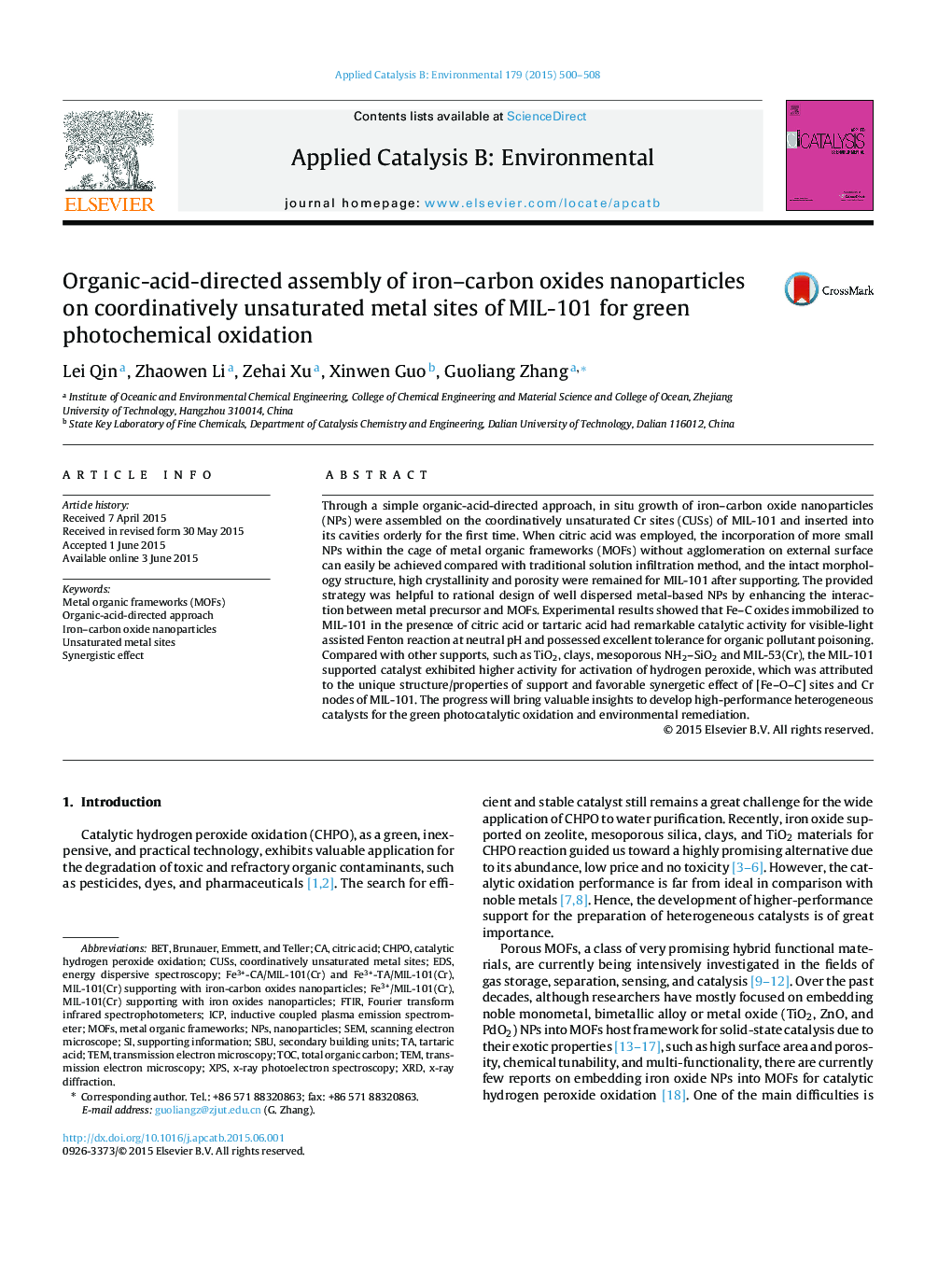| Article ID | Journal | Published Year | Pages | File Type |
|---|---|---|---|---|
| 45480 | Applied Catalysis B: Environmental | 2015 | 9 Pages |
•Iron–carbon oxide was firstly immobilized to MOFs by organic-acid-directed approach.•Citric acid employed led ultrafine NPs highly dispersed into cavities of MIL-101.•Fe–C oxides/MIL-101 exhibited superior activity for H2O2 activation at neutral pH.•Synergistic effect of [F–O–C] and Cr node had important role on catalytic activity.
Through a simple organic-acid-directed approach, in situ growth of iron–carbon oxide nanoparticles (NPs) were assembled on the coordinatively unsaturated Cr sites (CUSs) of MIL-101 and inserted into its cavities orderly for the first time. When citric acid was employed, the incorporation of more small NPs within the cage of metal organic frameworks (MOFs) without agglomeration on external surface can easily be achieved compared with traditional solution infiltration method, and the intact morphology structure, high crystallinity and porosity were remained for MIL-101 after supporting. The provided strategy was helpful to rational design of well dispersed metal-based NPs by enhancing the interaction between metal precursor and MOFs. Experimental results showed that Fe–C oxides immobilized to MIL-101 in the presence of citric acid or tartaric acid had remarkable catalytic activity for visible-light assisted Fenton reaction at neutral pH and possessed excellent tolerance for organic pollutant poisoning. Compared with other supports, such as TiO2, clays, mesoporous NH2–SiO2 and MIL-53(Cr), the MIL-101 supported catalyst exhibited higher activity for activation of hydrogen peroxide, which was attributed to the unique structure/properties of support and favorable synergetic effect of [Fe–O–C] sites and Cr nodes of MIL-101. The progress will bring valuable insights to develop high-performance heterogeneous catalysts for the green photocatalytic oxidation and environmental remediation.
Graphical abstractFigure optionsDownload full-size imageDownload as PowerPoint slide
